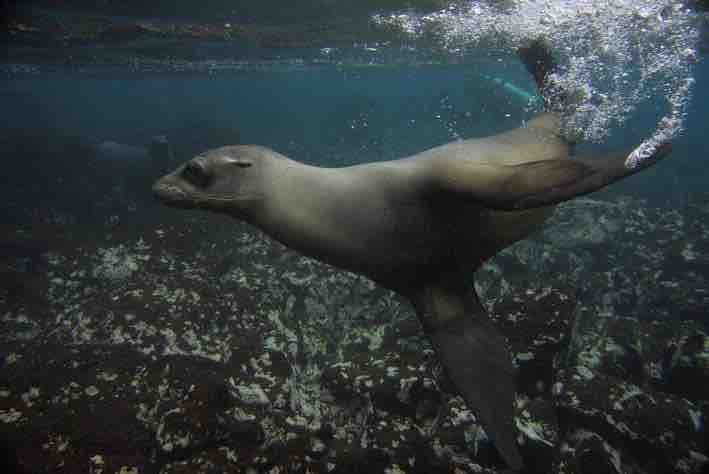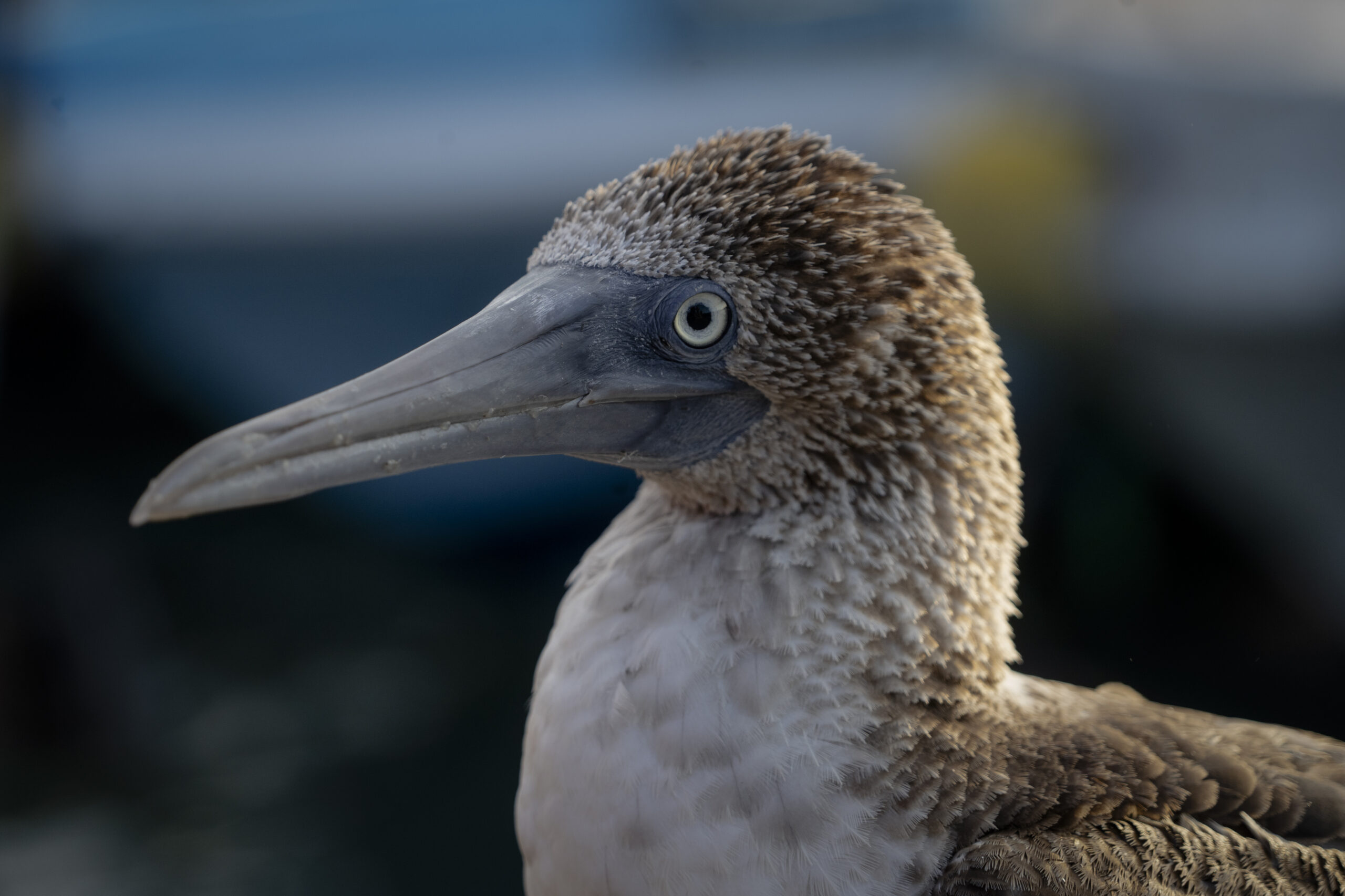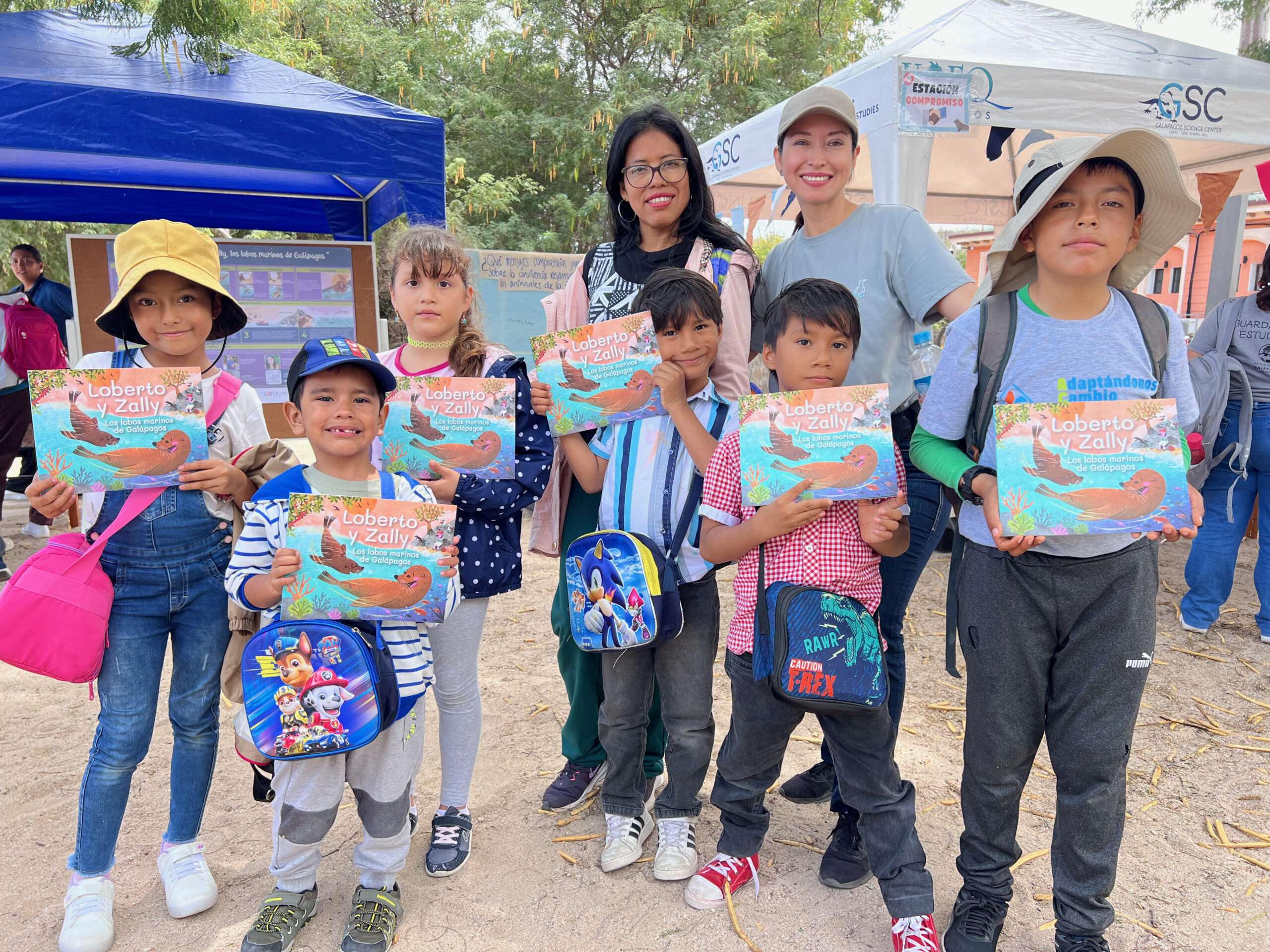Photo by Andrés Moreira-Mendieta.
Abstract
Tropical ecosystems are challenging for pinnipeds due to fluctuating food availability. According to previous research, the Galapagos sea lion (GSL, Zalophus wollebaeki) adopts trophic flexibility to face such conditions. However, this hypothesis comes from studies using traditional methods (hard-parts analysis of scat and isotopic analysis from tissue). We studied the diet of five rookeries in the southeastern Galapagos bioregion (which harbors the highest GSL density), via DNA-metabarcoding of scat samples. The DNA-metabarcoding approach may identify consumed prey with a higher taxonomic resolution than isotopic analysis, while not depending on hard-parts remaining through digestion. Our study included five different rookeries to look for evidence of trophic flexibility at the bioregional level. We detected 98 prey OTUs (124 scats), mostly assigned to bony-fish taxa; we identified novel prey items, including a shark, rays, and several deep-sea fish. Our data supported the trophic flexibility of GSL throughout the studied bioregion since different individuals from the same rookery consumed prey coming from different habitats and trophic levels. Significant diet differentiations were found among rookeries, particularly between Punta Pitt and Santa Fe. Punta Pitt rookery, with a more pronounced bathymetry and lower productivity, was distinguished by a high trophic level and consumption of a high proportion of deep-sea prey; meanwhile, Santa Fe, located in more productive, shallow waters over the shelf, consumed a high proportion of epipelagic planktivorous fish. Geographic location and heterogeneous bathymetry of El Malecon, Española, and Floreana rookeries would allow the animals therein to access both, epipelagic prey over the shelf, and deep-sea prey out of the shelf; this would lead to a higher prey richness and diet variability there. These findings provide evidence of GSL adopting a trophic flexibility to tune their diets to different ecological contexts. This strategy would be crucial for this endangered species to overcome the challenges faced in a habitat with fluctuating foraging conditions.
Read the article in the link: https://doi.org/10.1002/ece3.10921




